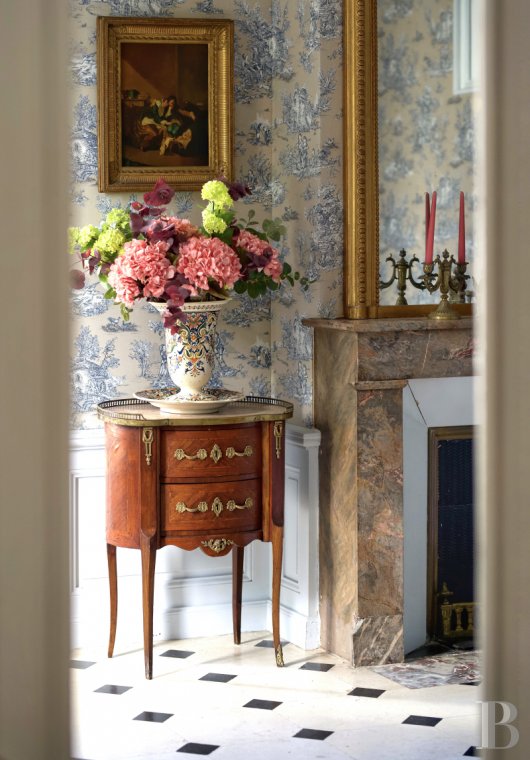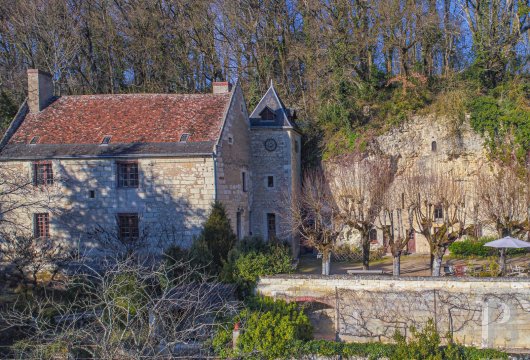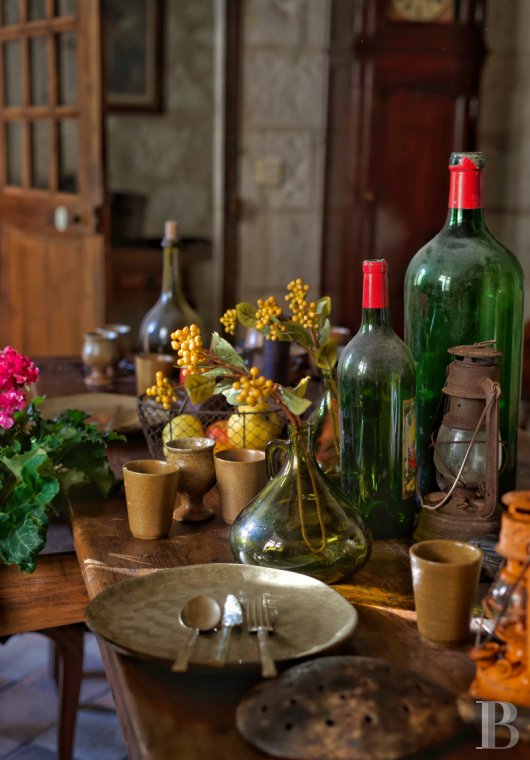Add to favorites
Log in to your personal space

In a region where the Renaissance truly left its mark, the city of Montrichard takes you back in time to the Middle Ages. A little further along the banks of the Cher, the manor of the Salle du Roc tells an even richer story. The property is singular yet multi-faceted. Entering it is like flicking through the pages of a history book. From the troglodyte ages to the Directory, each era has added its own touch to create a heterogeneous and mysteriously harmonious ensemble. Whether strolling through the garden and the surrounding forest, or succumbing to the warm atmosphere of the place and the comfort that has been provided, visitors will have plenty of time to discover what this mysterious place is truly made of.
Having lived in Touraine for almost ten years, we were looking for a guest house that combined history and architecture with a pretty park and, ideally, a vineyard. La Salle du Roc did so beyond our expectations, bringing together the singularity of a place inhabited since the Middle Ages, a 15th century manor in pure feudal style, a monumental cellar, several troglodyte cellars carved into the hillside, an 18th century master residence in the Directory style, a park, a forest, and, something rather unique, a large island on the Cher. All in the heart of the Loire Valley, on the banks of the Cher. The region is incredibly rich in heritage for a project that was both for our family and our work. It was love at first sight when we discovered this one of a kind, unique place.

Built against the hillside, the 15th century manor was originally the only dwelling on the estate. The walls are made of a particular type of tuffeau that was extracted on site - Bourré stone is dazzlingly white and was used to construct the chateaus of Chenonceau and Chambord. The building is three storeys high and topped with a flat tiled roof. A square tower with quoins completes the facade on the courtyard side. Two Napoleon III period clock faces signed by Henri Lepaute are visible on the tower. Inside, the majority of original features have been preserved and include terracotta tiles, French ceilings, and freestone fireplaces. A semi-troglodyte kitchen gives the property a unique quality. Opposite the manor, on the same level, a second manor all in freestone was built at the end of the 18th century in the purest Directory style. Facing south, with a view of the garden, a magnificent bay window extends the library. As for the orangery, it has been completely restored and now houses the breakfast room or the seminar room.

The history of the property dates back to the Middle Ages when caves carved into the rock provided refuge. Its history is closely linked to that of the fortress of Montrichard in the region of Anjou, a region which was under English rule for many years. The building was purely residential and the agricultural estate extended beyond the Cher. The mining of Bourré stone, a type of tuffeau stone known as the "stone of kings", left its eternal mark on the region through hundreds of kilometres of galleries. In the 16th century, a silkworm farm (whose state of preservation is remarkable) was set up and mulberry trees were planted to feed the silkworms. The largest of the estate's caves was transformed into a monumental cellar to serve the vineyard which began developing in the 19th century. A grape press is still present on the property. Finally, a further residence was built in pure Directory style in the 18th century. It was inhabited for nearly a century (1890-1973) by an American family, the Wells, who later became the Wells and Briggs family.
A sense of tranquillity in unspoiled nature, an environment perched on a hillside overlooking the Cher, surrounded by a park and a two-hectare forest. In 2023, the area will be granted the status of LPO Shelter by the Bird Protection League and an ornithological trail will be created. We offer two different experiences: a stay in a 15th century manor house that still features original architectural elements and is furnished in the style of that time; or a trip back to the 18th century in the Directory manor house which combines charm, romanticism and authenticity. A heated swimming pool completes the ensemble. We also have a table d'hôte which serves a food and Loire wine pairing based on fresh, local products, as well as vegetarian dishes and wine tastings in the cellar for small groups. As for the troglodyte cellar, events for groups of friends or exhibitions can be held there. Last but not least, a picnic on the island can be organised for our more adventurous guests.

Known as the 'Garden of France' and the land of good food, the region abounds with renowned restaurants. Of note are the Le Mange Grenouille in Saint-Aignan, and the Auberge de Montpoupon at the foot of the chateau for local cuisine with a twist that combines tradition and new discoveries. The Bouc Noir goat farm is worth a visit to learn about all the facets of goat cheese making, a local tradition that produces the Selle sur Cher in particular. Discover one of the twenty vineyards of the Touraine-Chenonceaux appellation on foot or by bike. After exerting yourself, take a break and enjoy a tasting at the Domaine de la Renne which won a gold medal at the Mondial du Sauvignon 2022. Cycle along the Cher or take the GR41 which starts from the manor. Fly over the Cher and the Château de Chenonceau in a hot air balloon or pass under the arches of the chateau in a river kayak after a two-hour descent.
2000 € - 2750 € per week
850 € - 1150 € per week-end
The mansion, with a surface area of 180m², is made up of a large kitchen, a second troglodyte kitchen, a large living room, three bedrooms with adjoining bathrooms and toilets, and a children's bedroom.
ref 911284
175 € - 245 € per night
350 € - 490 € per week-end
With surface areas of approximately 30 m², the two suites (Constance and Joséphine) each consist of a living room, a bedroom and a bathroom, and are furnished in the 18th century style.
ref 911284

 A link to enter a new password has been sent to you by email.
A link to enter a new password has been sent to you by email.